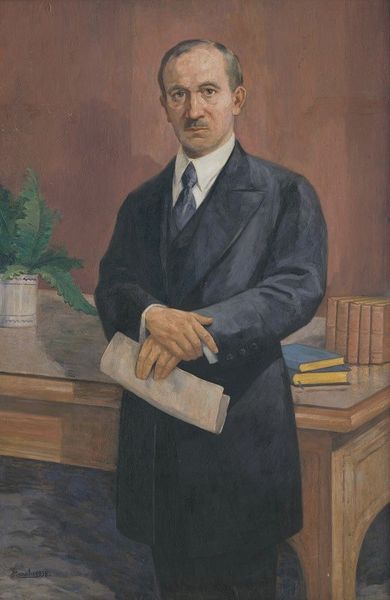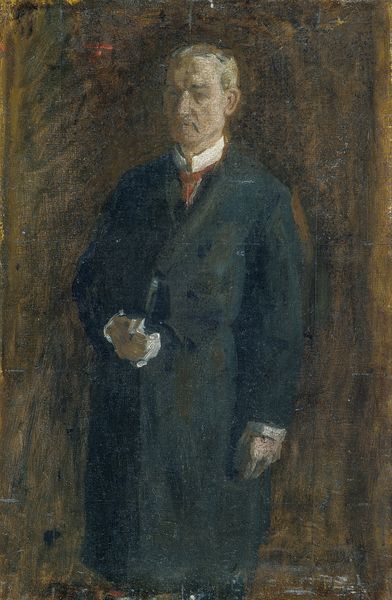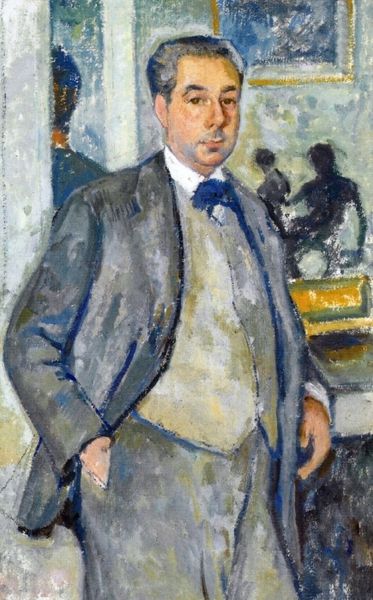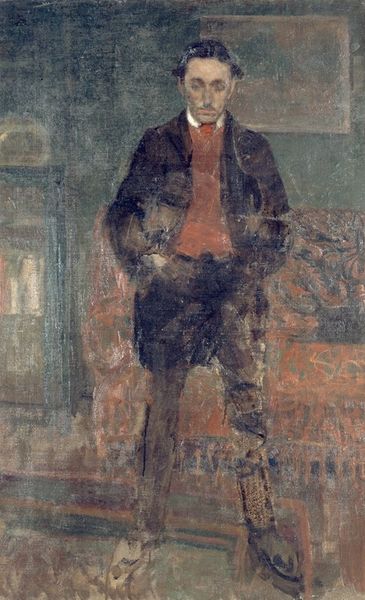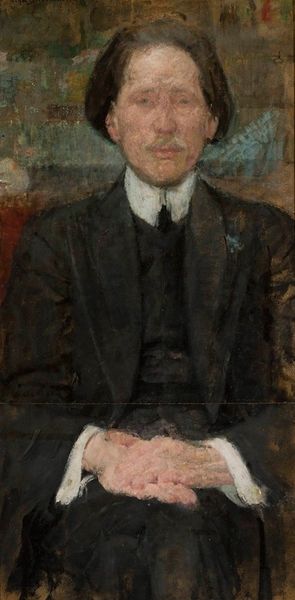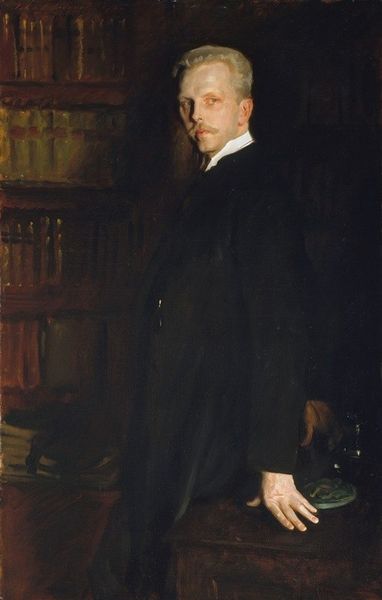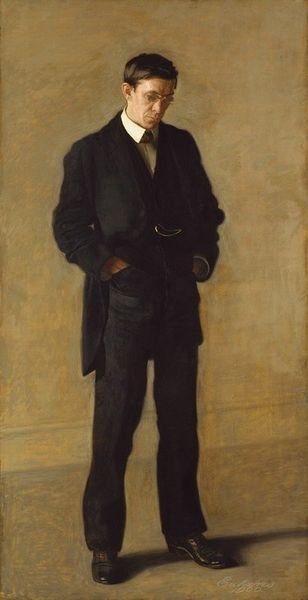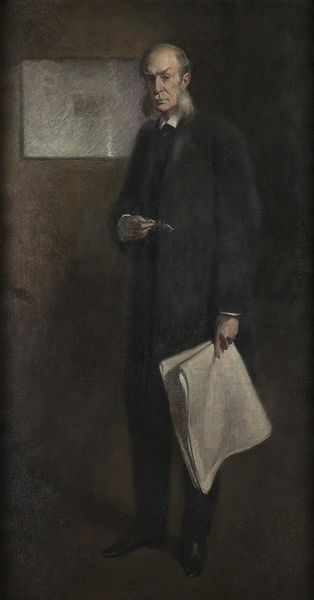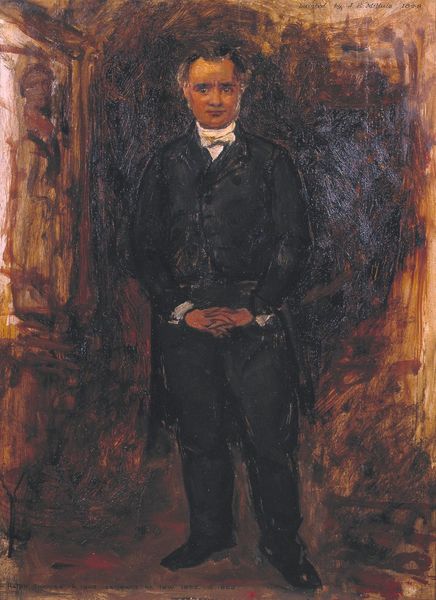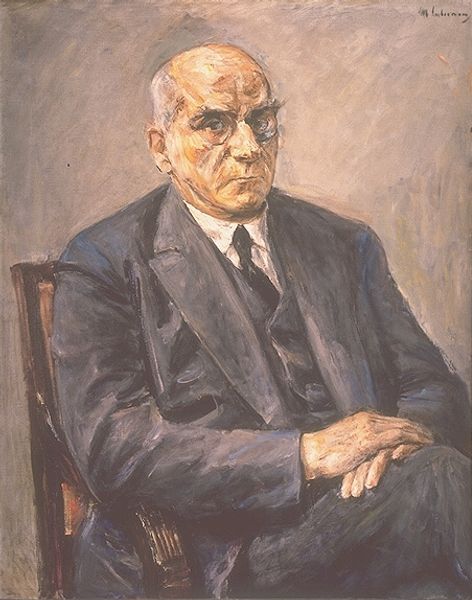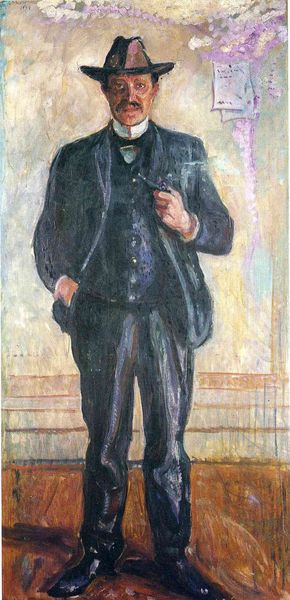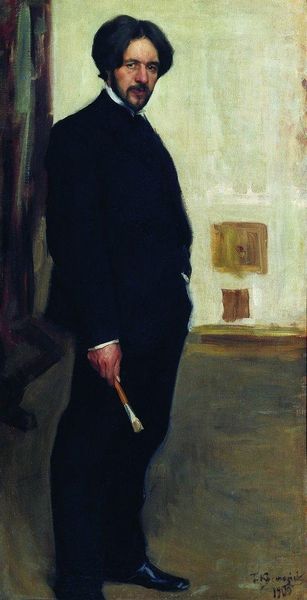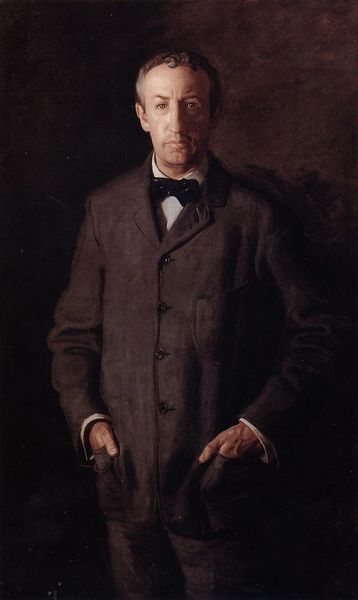
Dimensions: 115.4 x 76.84 cm
Copyright: Public domain
Curator: We're looking at Theo van Rysselberghe's "Self Portrait in a Green Waistcoat," painted in 1924. Editor: It's immediately striking – the muted palette and the texture of the paint give it such a grounded feel. It's less about showing off, and more about, well, being. Curator: That sense of 'being' connects to the larger discussion of representation in the early 20th century. Post-Impressionists like Van Rysselberghe were pushing beyond simple likeness, exploring the internal states of their subjects through brushwork and color choices. How does the 'self' intersect with the 'artist' in the portrayal, do you think? Editor: Definitely. Notice how the materiality of the studio becomes part of the portrait. Those canvases in the background—they're almost like witnesses to his craft. He is not just a person in isolation, but a laborer of a particular field. You can see his dedication embedded in every layer of paint. It invites you to consider the daily practices behind this work. Curator: I agree. The "Green Waistcoat" becomes a loaded signifier, referencing not only his profession but, perhaps, also challenging conventional sartorial norms. We have to consider, what does it mean for an artist to portray themselves outside established systems? How can this singular individual disrupt heteronormative structures, or, alternately, perpetuate exclusionary practices through his depiction? Editor: Looking at the composition, I am curious about the choice of clothing and materials to convey a certain professional status. It reminds me of debates surrounding art and craft. He depicts the material conditions of art making without necessarily elevating it to a status symbol, focusing instead on process. Curator: Yes, situating the artwork within its temporal and political moment is key, offering viewers insight into its ideological underpinnings and lasting cultural impacts. Understanding it helps to unravel contemporary anxieties and socio-political debates surrounding masculinity in artistic fields. Editor: Absolutely. The focus on materials provides a unique insight. It shows us how art-making can shape and express aspects of self-perception, and how those selves become inscribed within and through labor. It definitely shifted my focus on what art means for social value. Curator: Indeed, and for me it underscored art's capacity to question the social dynamics it is created within. Editor: Well, for me, this piece brings attention to the means through which one's own self perception manifests from the material means available to it.
Comments
No comments
Be the first to comment and join the conversation on the ultimate creative platform.
